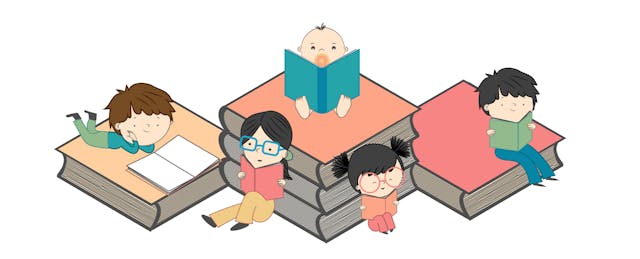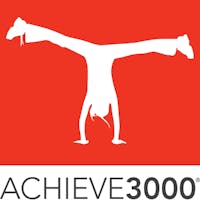Michael Ballone, director of curriculum for the K-8 Marlboro Township Public Schools in New Jersey, has a clear idea of what most literacy instruction gets wrong: it only serves struggling readers. “I think every child needs to have some kind of reading intervention,” says Ballone, a former seventh-grade English teacher. “It might mean acceleration or it might mean remediation. If it means we need to give students material one, two or three grade levels above what they are reading in order for them to progress, that’s what we do.”
At Marlboro Township, such a tapestry of interventions is woven into the fabric of the curriculum thanks to Achieve3000. With online differentiated literacy instruction, the platform delivers nonfiction content matched to each student’s individual Lexile® score. The fit is so precise, says Ballone, “it’s like buying a custom tailored shirt at a boutique as opposed to buying something off the rack.”
EdSurge caught up with Ballone to discuss differentiation tools, the dangers of not intervening with above-average readers and the thrill of seeing equity in action in the classroom.
What does differentiated literacy instruction mean?
Michael Ballone: Differentiating in literacy means tailoring text complexity to a child’s ability. You have a Lexile measure of the reader and a Lexile measure of the text. If we can reasonably match those two, we will have a high success rate of comprehension and ability to read that text.
In the past, kids in K-2 would get a reading assessment with their teacher but students in upper grades were just expected to be able to read. It was difficult to ascertain those students’ reading levels unless you were a reading specialist, and even then, assessments were performed individually and were very time-consuming. In 2010, New Jersey adopted Common Core standards. This meant meeting all students where they were, not only struggling students—typically the only ones who saw reading specialists—but also students reading on and above grade level.
What was lacking was a way for teachers to do it efficiently. Now, in a class of 25 students and within approximately 40 minutes, a teacher can know exactly where each child’s reading level is, and then, with the click of a button, assign them an article at that level. That alone has enabled teachers to differentiate efficiently and effectively.
Learn more about Marlboro Township's impressive results and download a case study.
Why is differentiation important?
There’s one slide that sticks in my head from a presentation on literacy research a few years ago. There was a student population that was reading below grade level in grade three and received a specific reading intervention. By grade five, they were reading on grade level. The intervention met them where they were and put them back on the positive trajectory line. The same study looked at students who were not struggling—reading on grade level in grade three. Those students received no reading intervention. The message was simple: you’re on grade level, great, here’s your grade level reading material. And the study showed that those students actually regressed.
This speaks so clearly to why every student needs to be pushed. Not to the point of frustration, but students need to continue to accelerate their literacy skills regardless of where they fall on the reading achievement continuum. If educators do not promote acceleration and allow students to simply lift the five-pound weight for two years, student muscles will not grow. Students need not put a 50-pound weight in their hands, but perhaps a five-pound weight, then a seven-pound weight, then a nine-pound weight. And you continue to accelerate them incrementally, yet never stop challenging them.
How do you help high-achieving readers?
For purposes of example, in a seventh-grade class in early September, 25 students log into Achieve3000 and participate in a 40-minute activity called LevelSet™. Essentially, it’s an adaptive assessment that finds a student’s reading level, which is denoted by a Lexile score. Say you and I are in the same class, and your Lexile is 100 points higher than mine. We are assigned an article by our teacher about Citi Bikes in New York City. At first glance, our computer screens look identical; we have the same picture. The real difference is when you start reading that article. Because you are 100 points higher than I am, your article will be more dense, and the sentence structure and vocabulary will be more sophisticated than in mine. However, the whole class could discuss the article because we read the same subject.
As recently as ten years ago, reading instruction, especially in the upper grades, had a one-size-fits-all philosophy. The high-achieving readers would rip through it because it’s on grade level and they might have been reading two grade levels above. Then, they are either teaching their neighbor, which makes me ill, or they become the class helper: ‘you finished early, you always finish early, you’re the smart one, we need to wait for the rest of the class.’ This philosophy does not provide equity and fairness. Achieve3000 doesn’t allow for that; it continues to push the high achievers and accelerate their learning.
How do you bring equity and energy into the classroom?
We have a pullout Gifted and Talented program at the elementary school level. These kids are reading at minimum two grade-levels above their chronological age. I observed a G&T class that was partnering with a Basic Skills Instruction class. So you have kids reading two grade levels above and kids reading one and two grade levels below. They worked together through an Achieve3000 article on Oprah Winfrey and her school for girls. Talk about equity! During the conversation at one table, I couldn’t tell who was the G&T student and who was the BSI student. Students were presented with the article at their level and it allowed the basic skills students to hold an intelligent conversation and generate their own questions about the text. Both G&T and BSI students had great conversations. I really think they learned from each other, which you typically don’t see.
Can you point to stats that reflect the impact your reading intervention efforts have had on your district?
We use Achieve3000’s Leadership Edition, which lets you kind of zoom out and say, okay, what did that school do, what did the district do, what are the percentages of students who are on track for college and career readiness? So it gives you a very high-level view of the trends, and then you can go in and dig a little deeper where you want to.
We’ve seen exponential growth in Lexile scores from September through May every year we’ve used Achieve3000. The CEO knows us by name because we had 7.5 times the national average Lexile growth! We begin the year with about 65 percent of our kids reading on grade level, and by the end of the year, that number shoots up beyond 80 percent. And Achieve3000 only measures nonfiction text, which typically is more challenging than fiction.
What kind of feedback do you get from educators?
In the beginning, I think teachers wondered, ‘How am I going to fit this into my day?’ But that’s no longer the case. We have shared the responsibility across many disciplines, not just the English department. Our health teachers use Achieve3000 because they find articles about health topics. Our science teachers use it, our social studies teachers use it. It spreads the responsibility and sends a very strong message that we don’t only read in English class. Literacy is everywhere. There is no escaping it.



